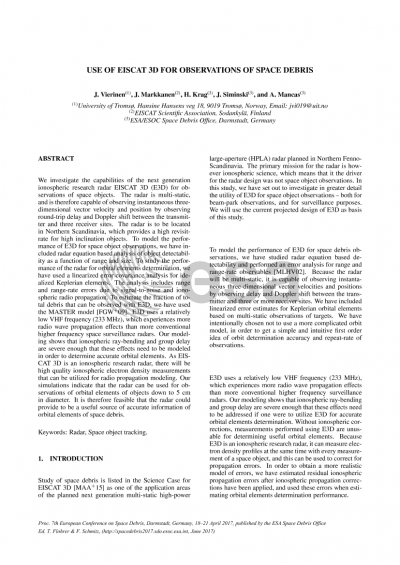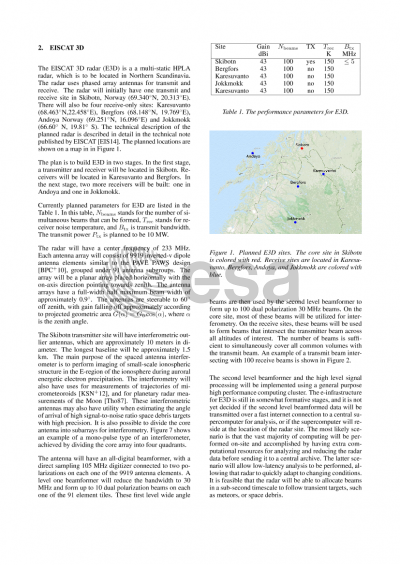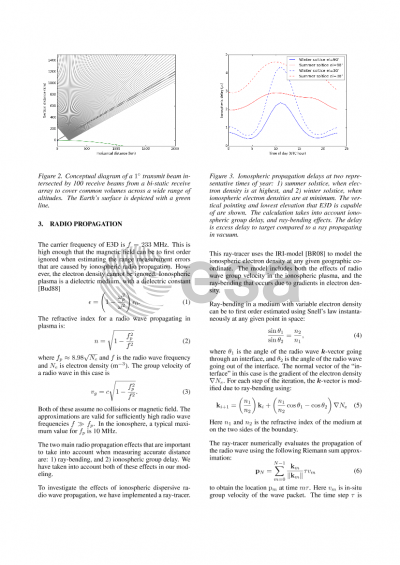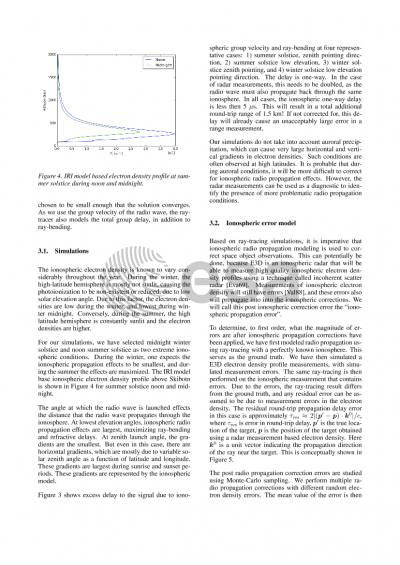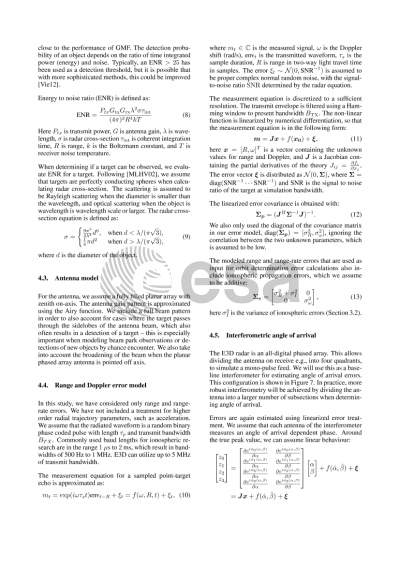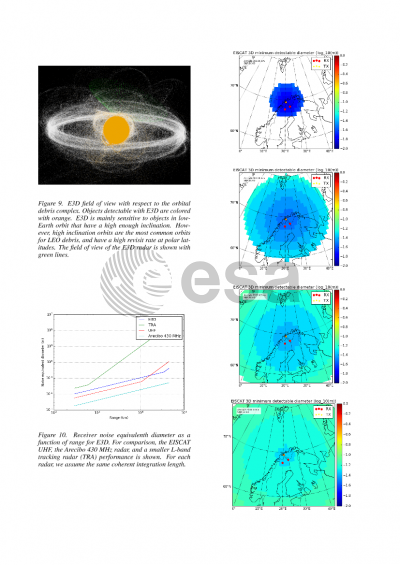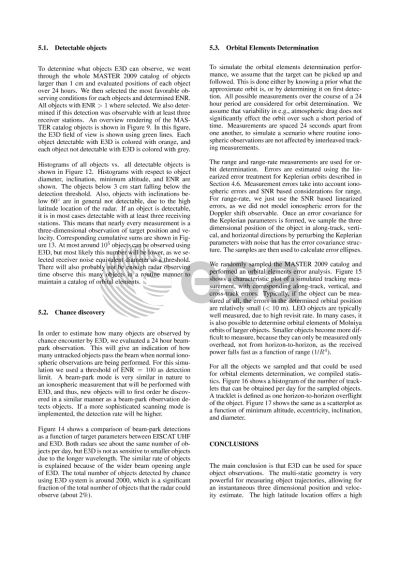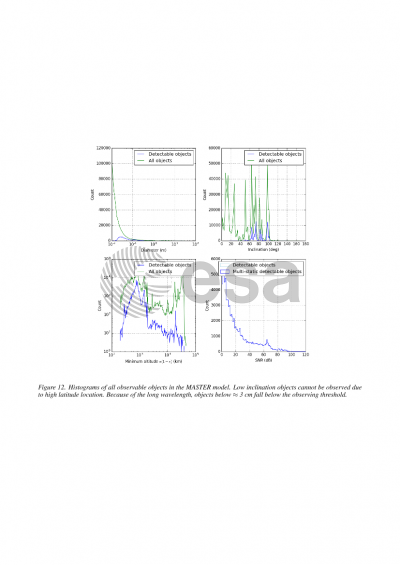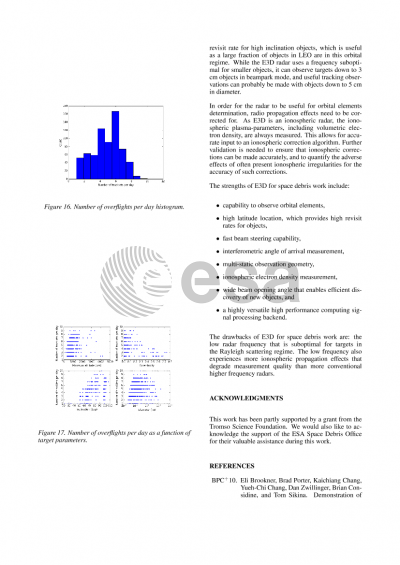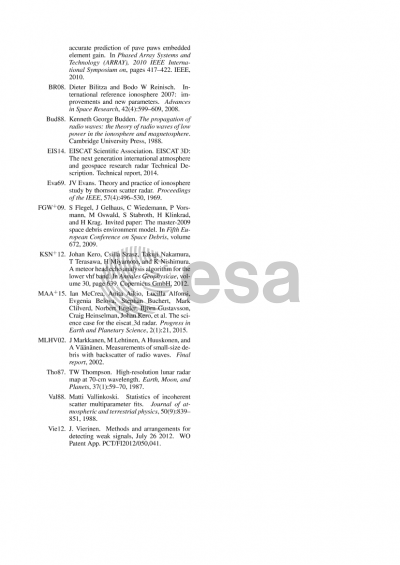Document details
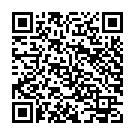
Abstract
We investigate the capabilities of the next generation ionospheric research radar EISCAT 3D (E3D) for space debris observations. We have used the current projected design of E3D as basis of this study. To model the performance of E3D for space debris observations, we have included basic radar equation based error analysis for range and range-rate observations. Because the radar will be multi-static, it is also capable of observing instantaneous three-dimensional vector velocities and positions by observing round-trip delay and Doppler shift between the transmitter and three receiver sites. We have included error estimates for both of the the three-dimensional position and three-dimensional vector velocity observations. To estimate the fraction of total debris that can be observed with E3D, we have used the MASTER model. We have also investigated effects of radio wave propagation. E3D uses a relatively low VHF frequency (233 MHz), which experiences more radio wave propagation effects than more conventional L-, S- or X-band space surveillance radars. Our modeling shows that ionospheric ray-bending and group delay are severe enough that these effects need to be addressed if one wishes to utilize E3D for accurate orbital elements determination of orbital debris.
Preview
